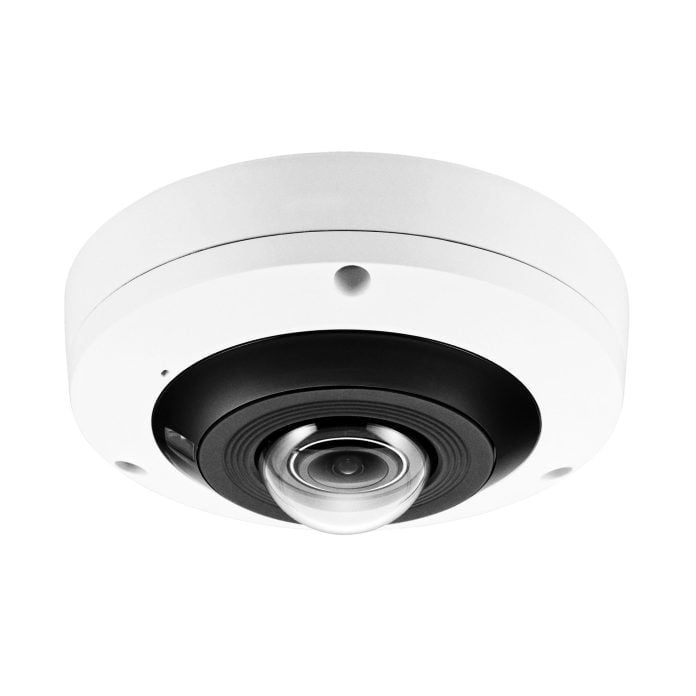What are the positives and negatives of hemispheric CCTV cameras – what are their ideal applications and what sorts of issues should installers and end users keep an eye out for?
A: Hemispheric cameras give 180-degree or 360-degree wide angle views, making them ideal for a range of applications from retail to foyers, and from lifts to transportation. Their lens characteristics are the key feature of hemispheric cameras. Among the first practical uses for fisheye lenses after their invention in 1906 was in meteorology, where they were known as whole-sky lenses and used to study cloud formation.
A great strength of hemispheric cameras is that they don’t miss any action in a scene – a person will not move from one camera to another as they would with fixed cameras or standard PTZ units. This continuity applies to recordings, too, and greatly enhances court admissibility of image streams, as long as pixel spread is taken into account.
A fisheye lens uses visual distortion to create a hemispherical view – what this means is that these lenses don’t give rectilinear images – there are no straight lines. Instead, you get equisolid angles delivering a convex image. Hemispherical surveillance cameras use image correction to straighten out scenes when users zoom into scenes. Some do this so well their digital zooms appear flawless, if a little softer than usual.
Things to bear in mind when comparing hemispheric cameras include the fact different fisheye lenses have different characteristic distortions and different lens mapping functions. There are also variations in image quality that are best directly compared by objective test. Hemispheric cameras are capable for a range of internal applications where a complete synthesis of a scene is most desirable and where distances are not so great that face recognition is impossible – that means around the 5-7 metre range.
Single lens 360-degree hemispheric cameras spread their pixels. Regardless of sensor size, this pixel spread will soften images from close in, so you’ll get faces between 5-10 metres depending on sensor resolution and there will loads of situational awareness past that. As light falls, fine detail will be lost earlier, too. Depending on what you are trying to achieve, this softness in larger applications may mean no court-admissible face recognition.
Alongside the serious compromise of pixel spread and shallow DoF comes a benefit. Situational awareness will be profound and at no time will a subject in the target area leave the field of view – you’ll be able to view events with complete context and continuity. Furthermore, hemispheric lenses have a small hyperfocal distance, so everything in the scene will be more or less in focus. To make this sort of coverage work in court, you need your hemispheric view to be able to identify dress or general features of individuals you’ve already identified at an entry point using a longer lens with a much narrower angle of view – 8-10mm for a 1/3rd of an inch sensor.
There are other downsides. Any wide lens will be at risk of flare and fisheye lenses are more susceptible still. Hemispheric CCTV cameras also have lashings of an optical aberration called barrel distortion, which bends straight lines and means that magnification decreases the further you go from the optical axis. With a hemispheric, the presence of barrel distortion is a characteristic that might be corrected in software, but it can’t ever be avoided.
Depending on your application, 180-degree and 360-degree cameras can deliver multiple image streams from one hemispheric camera – one view will be the full view and around it will be arrayed images where the curvilinear scene is adjusted to a rectilinear format in-camera for more intuitive display. There will obviously be some loss of detail at the edges, top and bottom where native angle of view is shorn off by software. Correcting software that relies on averages will also introduce softness to the final output.
#sen.news











